Is this the ultimate portrait lens?
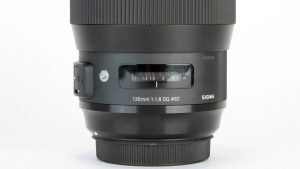
What is the Sigma 135mm f/1.8 DG HSM Art?
Since the inception of its premium Art range of lenses towards the end of 2012, Sigma has gone from strength to strength. The 35mm f/1.4 DG HSM Art lens that kicked the whole series off has since been joined by four more focal lengths – 20mm, 24mm, 50mm and 85mm – to fill out an impressive set of f/1.4 primes.
For its next move, the firm is going wider and longer with slightly slower f/1.8 designs, and here we’re looking at the Sigma 135mm f/1.8 DG HSM Art – a beast of a lens with a hefty £1399 price tag.
Perhaps surprisingly, this is the first new autofocus 135mm prime lens for DSLR cameras that we’ve seen for quite some time. While Canon, Nikon and Sony’s offerings are all superb, they’re looking a bit long in the tooth, and the brand-new Milvus 135mm f/2 announced by Zeiss at Photokina last year is manual focus only.
So Sigma has the opportunity to show us just how good a fast autofocus 135mm prime can be with an up-to-the-minute, no-compromise optical design. And boy does it deliver.
Related: Best cameras
Sigma 135mm f/1.8 DG HSM Art – Features
Sigma is making some very bold claims for this new optic, saying that not only is it suitably sharp for use with 50-megapixel sensors, it also minimises axial chromatic aberration. To this end the 13-element, 10-group design includes two super-low dispersion (SLD) glass elements and two ‘F’ low dispersion (FLD) glass elements. The aim is to give super-sharp, clean images, even at f/1.8.
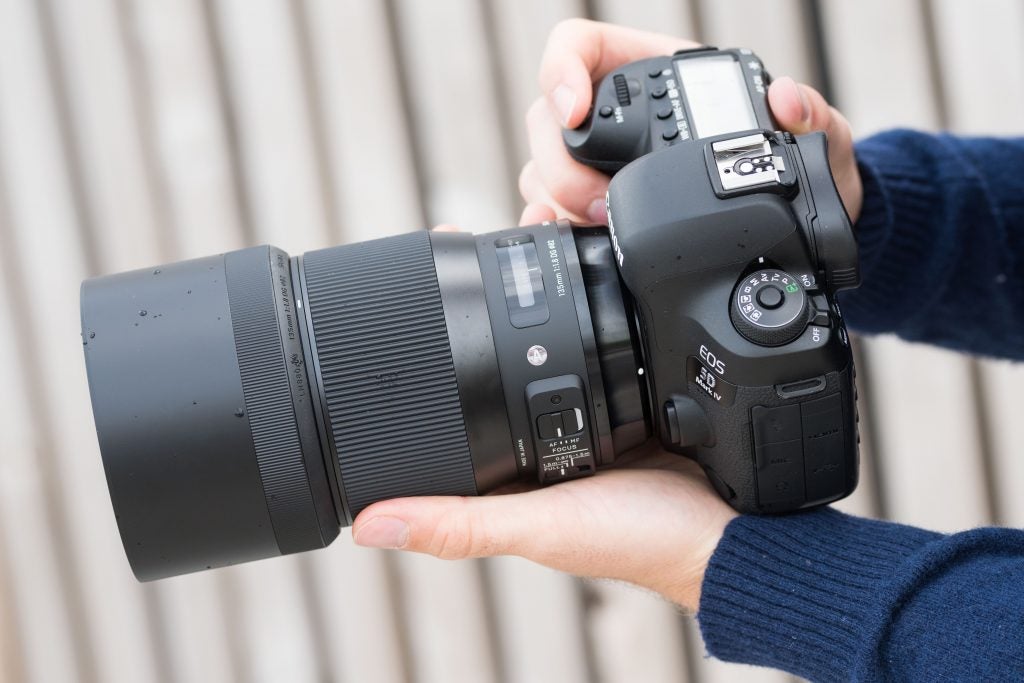
Autofocus is driven by an ultrasonic-type hypersonic motor, with full-time manual focus override also available. A floating focus mechanism is employed to maintain high image quality across the full focus distance range, from infinity to a minimum of 87.5cm. At this point the lens gives a maximum magnification of 0.2x, which equates to a subject area of 12 x 18cm with full-frame cameras.
Sigma has installed a diaphragm mechanism with nine rounded blades that keeps the aperture near-circular down to the smallest setting on offer, which is f/16. Nikon users will benefit from a built-in electromagnetic diaphragm of the type Canon users have enjoyed for years, which Sigma says should give more stable exposure during continuous shooting.
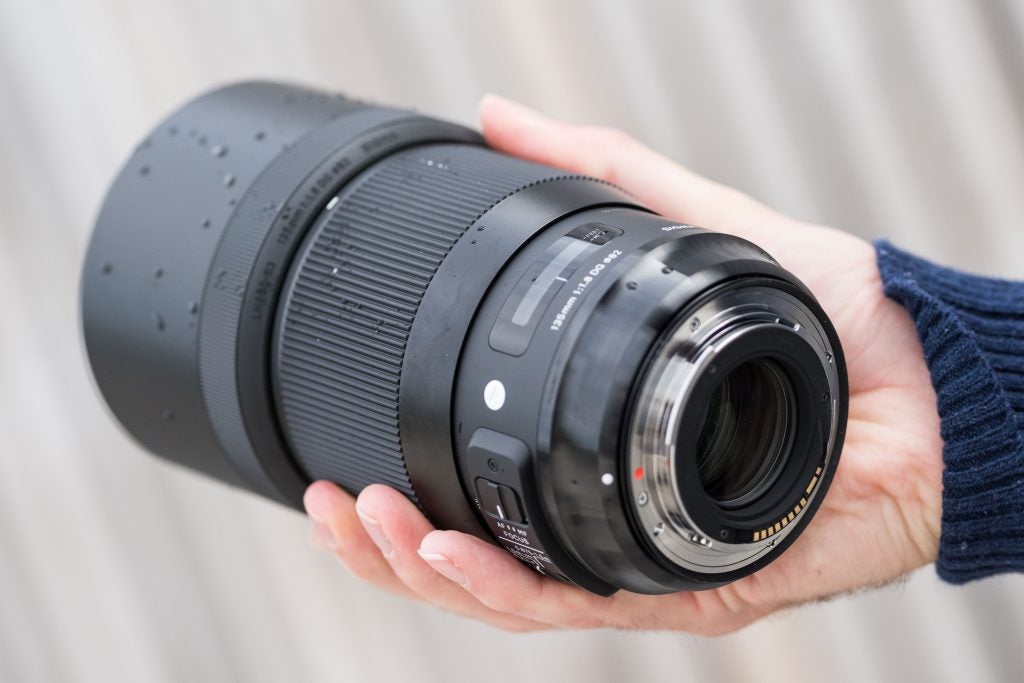
The lens is available in Canon, Nikon and Sigma mounts, but it can also be used on Sony E-mount cameras via the £200 Sigma MC-11 mount converter, with all functions seamlessly maintained – including autofocus and electronic aperture setting.
Sigma 135mm f/1.8 DG HSM Art – Build and Handling
The first thing you’ll notice on unboxing the 135mm is its size; at 91.4mm in diameter and 114.9mm in length, it’s a hefty piece of kit that weighs 1130g. As most of the glass is concentrated towards the front of the lens, it actually feels heavier in-hand than you might expect.
It’s definitely best suited for use on larger cameras such as the Canon EOS 5D series; on more modestly sized bodies such as the Sony Alpha 7 II, for example, it becomes very front-heavy. I certainly began to notice its weight after carrying it around for a few hours – it isn’t something you’d want to lug around on the off-chance of finding a suitable subject.
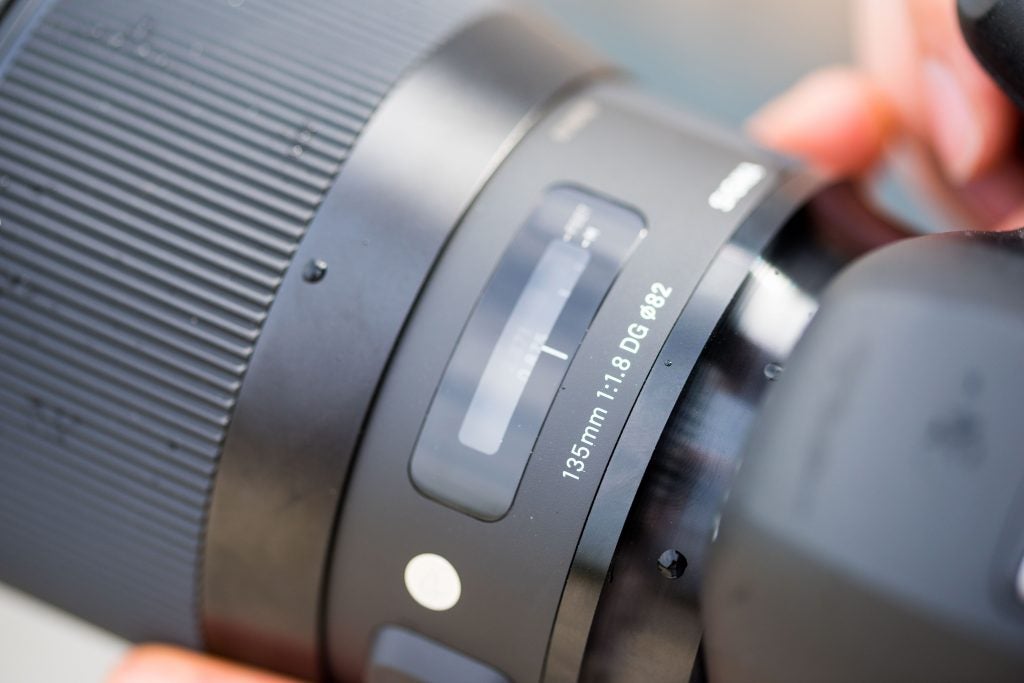
Build quality is exactly as we’ve come to expect from Sigma’s premium line, which means it’s very good indeed. Ahead of a metal section immediately adjacent to the camera body, the barrel is predominantly made of high-quality plastics. The large manual focus ring rotates extremely smoothly without any hint of backlash, with a small window on the top of the barrel indicating the current focus distance.
A rubber seal to stop dust or water getting into the camera encircles the lens mount, while the front and rear glass surfaces are treated to a water- and oil-repellent coating.
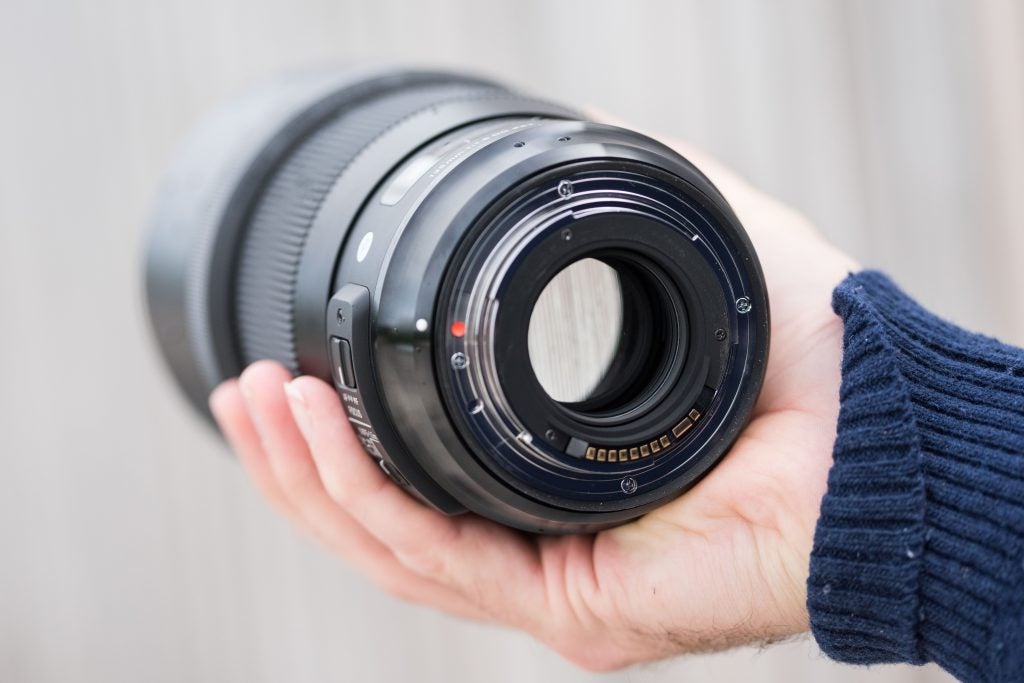
At the front of the lens you’ll find a non-rotating thread for attaching 82mm filters. It’s surrounded by a bayonet mount for the deep cylindrical hood, which can be reversed over the barrel when not in use.
On the side there’s a pair of switches, one to change between auto and manual focus, and another that can be used to limit the focus distance range to 1.5m to infinity, or 0.875m to 1.5m. This can be handy for reducing hunting in some situations.
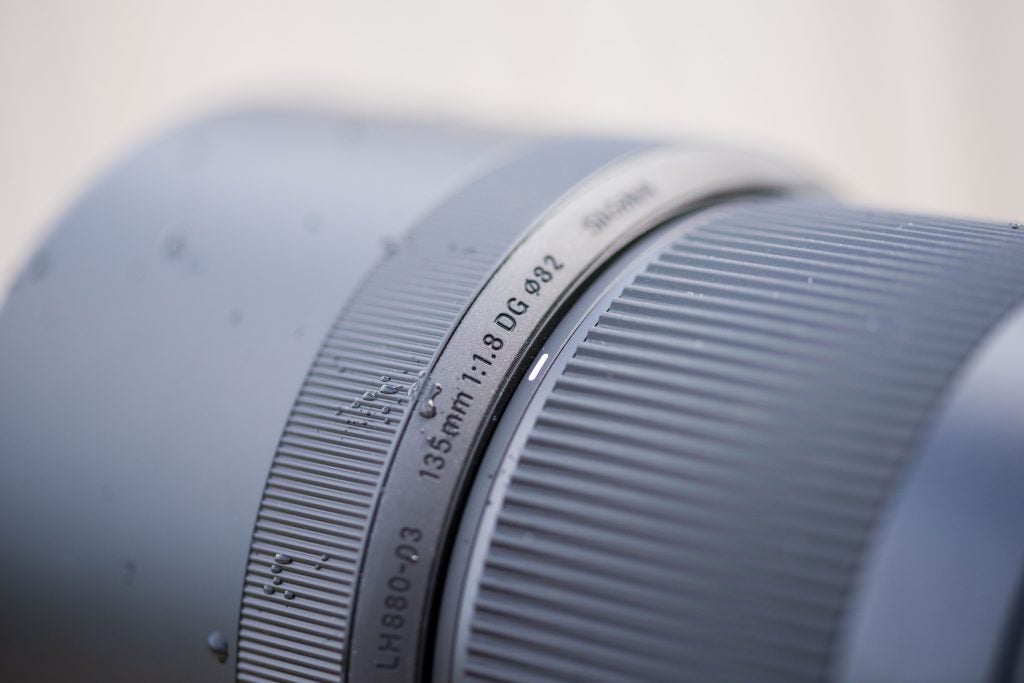
As is usual from Sigma, the lens is rounded off by a few neat design touches: a white inlay in the focus mode switch gives a quick visual confirmation of when it’s set to autofocus, while a ridged grip around the non-rotating section of the barrel affords a secure hold.
Sigma 135mm f/1.8 DG HSM Art – Autofocus
Sigma has employed a focusing mechanism that moves the smaller elements towards the rear of the lens, and this gives impressively fast and decisive autofocus on the Canon EOS 5D Mark IV I used for testing.
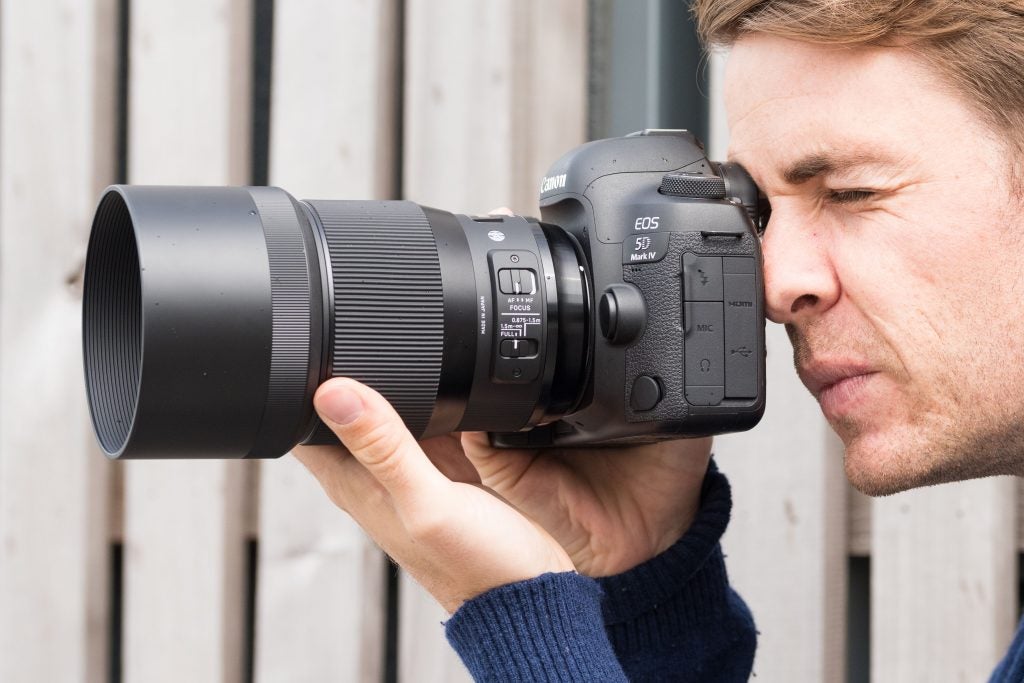
For close focus distances, of up to 4 or 5 metres perhaps, I found the AF was pretty accurate; at longer distances it became increasingly less reliable, however. This kind of behaviour is pretty common with SLRs and becomes ever more visible as sensor resolutions increase. As a result, you’ll almost certainly need to configure autofocus micro-adjustment to get consistently pin-sharp autofocus.
For this purpose the 135mm is compatible with Sigma’s USB dock, which also allows the lens’ firmware to be updated in future if this turns out to be necessary. Meanwhile, to achieve accurate manual focus on a DSLR you’ll need to use magnified live view – forget about trying to use the viewfinder.
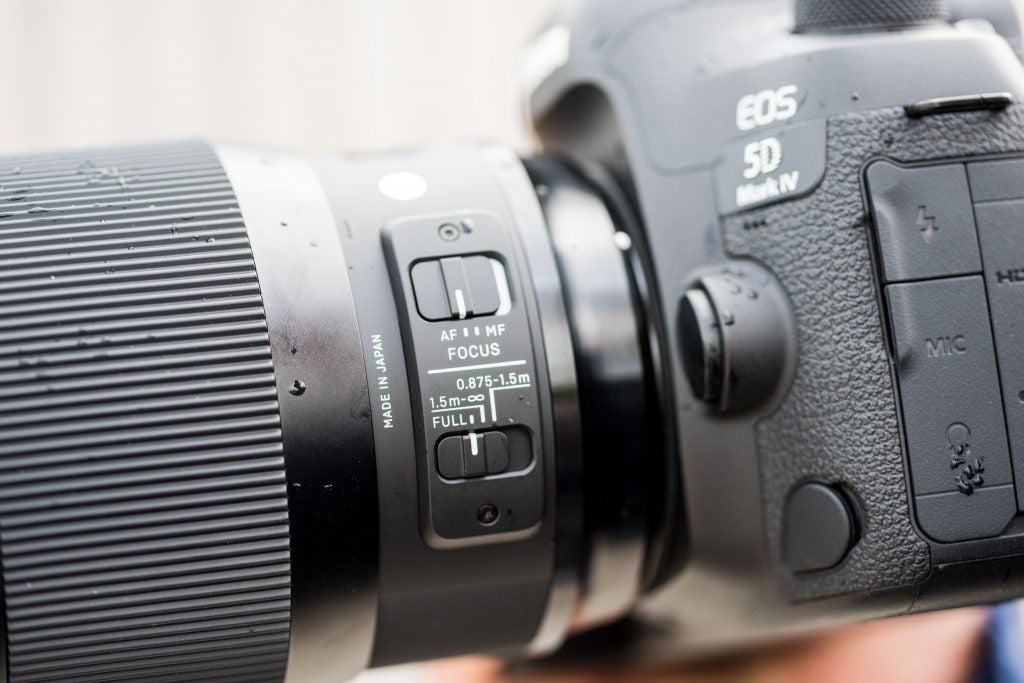
I also tested the lens on a Sony Alpha 7 II using the MC-11 converter and discovered that while the autofocus slows down noticeably, it’s still quite tolerable. But the huge advantage is that the camera’s on-sensor hybrid AF system gives consistently accurate results, no matter what the focus distance and wherever in the frame you place the focus point.
Unlike with the optical finder of a DSLR, you’ll also achieve an accurate representation of focus and depth of field, no matter what aperture you’re using – large or small. Switch to manual focus mode and you’ll find that turning the focus ring will automatically engage the magnified MF Assist view.
The post Sigma 135mm f/1.8 DG HSM Art Review appeared first on Trusted Reviews.
Author: Andy Westlake
This article comes from Trusted Reviews and can be read on the original site.
